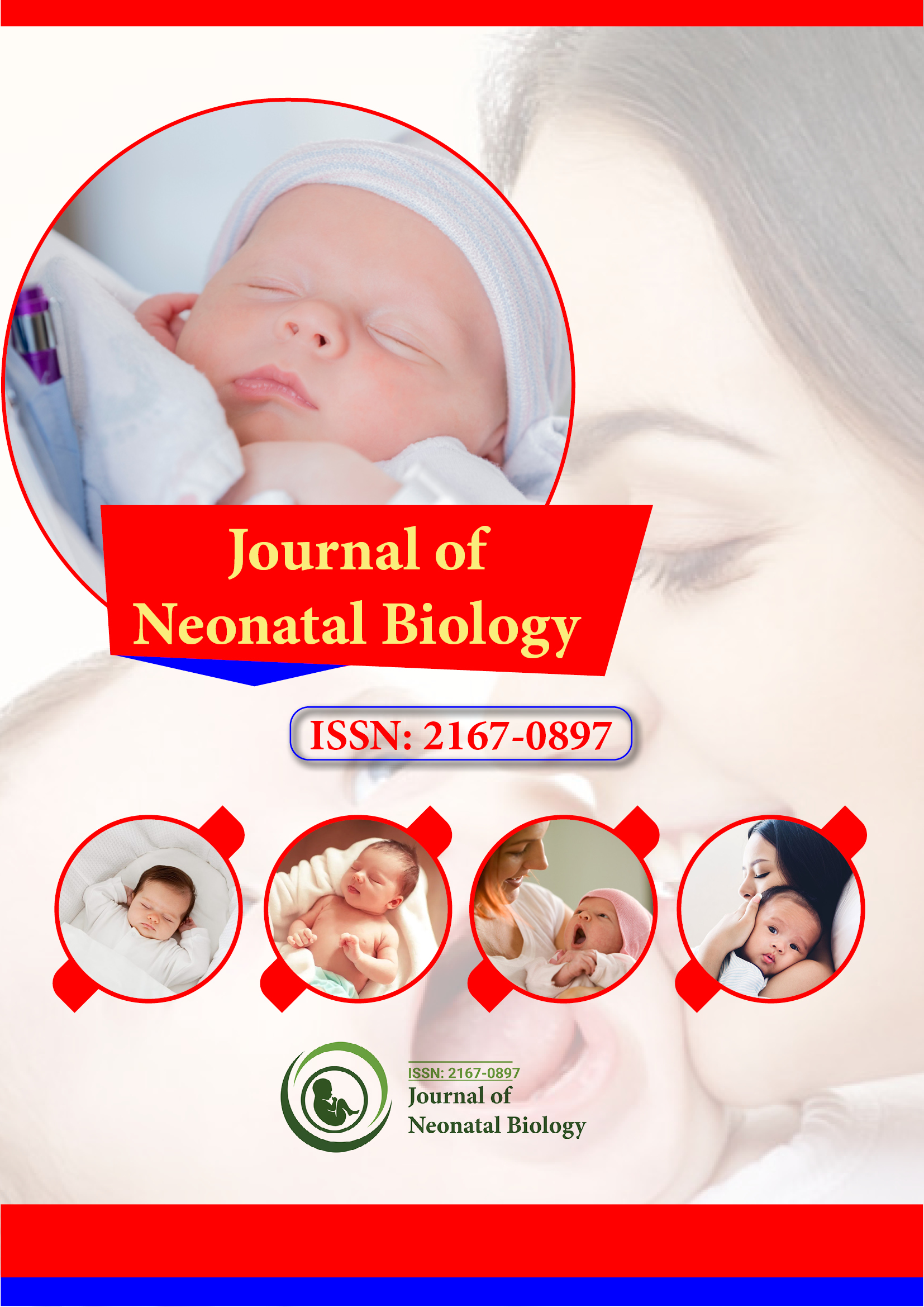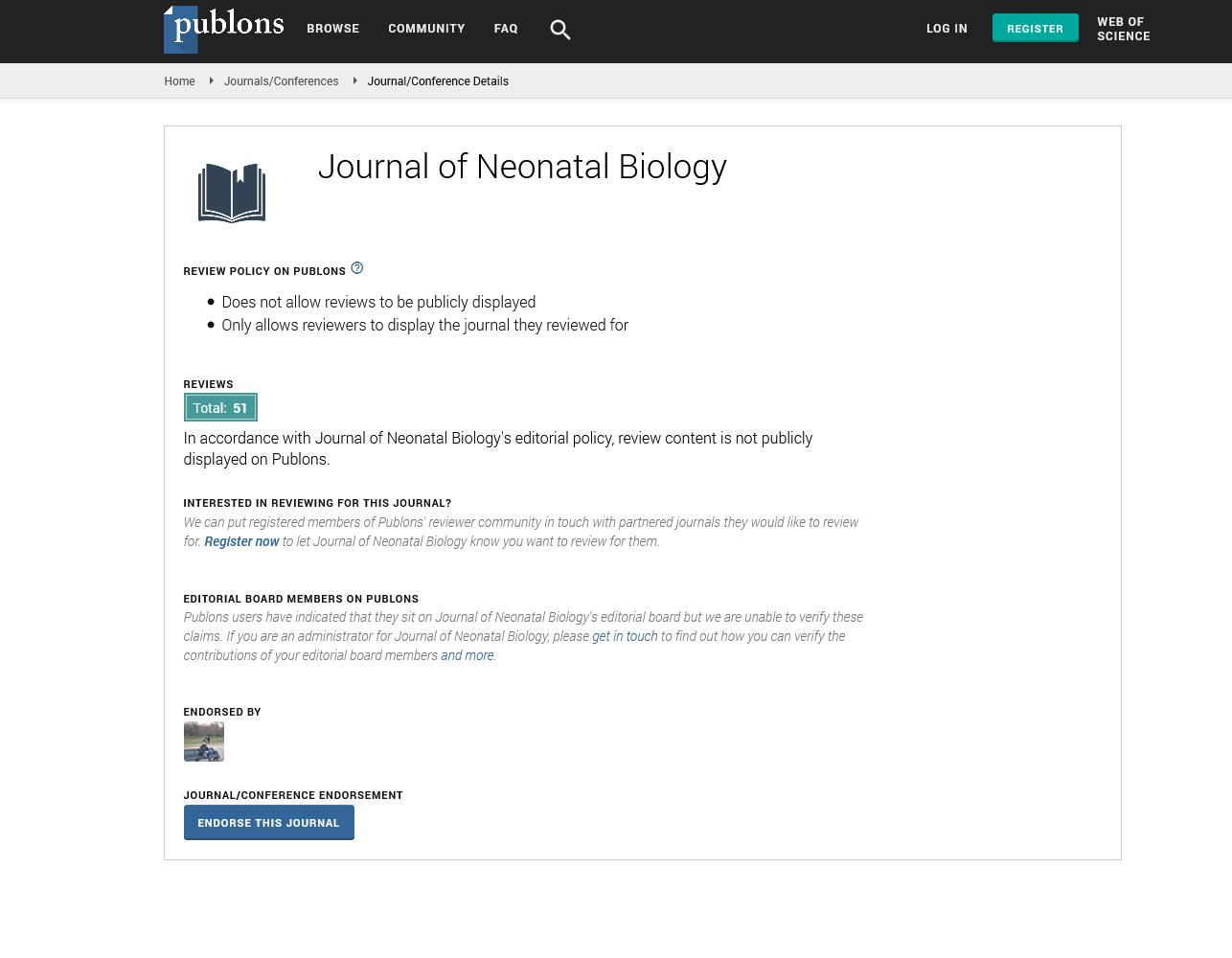Indexed In
- Genamics JournalSeek
- RefSeek
- Hamdard University
- EBSCO A-Z
- OCLC- WorldCat
- Publons
- Geneva Foundation for Medical Education and Research
- Euro Pub
- Google Scholar
Useful Links
Share This Page
Journal Flyer

Open Access Journals
- Agri and Aquaculture
- Biochemistry
- Bioinformatics & Systems Biology
- Business & Management
- Chemistry
- Clinical Sciences
- Engineering
- Food & Nutrition
- General Science
- Genetics & Molecular Biology
- Immunology & Microbiology
- Medical Sciences
- Neuroscience & Psychology
- Nursing & Health Care
- Pharmaceutical Sciences
Perspective - (2022) Volume 11, Issue 8
Physiology of Gas Exchange in the Normal Newborn Lungs
William Urmey*Received: 01-Aug-2022, Manuscript No. JNB-22-18063; Editor assigned: 05-Aug-2022, Pre QC No. JNB-22-18063 (PQ); Reviewed: 19-Aug-2022, QC No. JNB-22-18063; Revised: 23-Aug-2022, Manuscript No. JNB-22-18063 (R); Published: 31-Aug-2022, DOI: 10.35248/2167-0897.22.11.363
Abstract
Description
Although the placenta exchanges the fetus's respiratory gases, active Foetal Breathing Movements (FBMs) begin to occur at around 10 weeks of pregnancy. The incidence of FBM rises with gestational age but falls just before labour begins. FBMs demonstrate the foetus' capacity to use and train the respiratory muscles while it is growing so that they are ready for use after birth. They also show how well the lungs and brain circuits that control breathing are developing. Increasing maternal glycemia or hypercapnia causes FBMs to occur more frequently, whereas exposure to nicotine, hypoxia, alcohol, and drugs (opiates) in pregnancy causes them to occur less frequently or even cease entirely. Severe oxygen shortage causes the foetus to aspiration meconium and/or other amniotic fluid by triggering deep, gasping-type efforts. Rapid diffusion of respiratory gases between tissue and plasma, erythrocyte and plasma, plasma and resident alveolar gas, and alveolar gas and gas in the conducting airways is necessary for respiratory gas exchange. Alveolar-capillary membrane diffusion has been identified as the most likely inhibitor of gas exchange among them.
Fick's law, which states that the amount of gas transferred, is determined by the partial pressure of that gas in the two compartments, the inverse of the square root of the gas's molecular weight, and the particulars of the diffusion barrier, summarizes the passive process of gas movement between alveolar space and pulmonary capillary blood (thickness and surface area). It is useful to research a single gas that has a strong affinity for haemoglobin in order to streamline the analysis. The study of diffusing capacity is made easier because, due to the avidity with which carbon monoxide and haemoglobin mix, PCO in pulmonary capillary plasma is practically zero when minute amounts of carbon monoxide are inspired.
Grasp the pathogenesis and maximizing the treatment of many respiratory illnesses in preterm and term newborns depends on having a thorough understanding of normal neonatal pulmonary development and physiology. It lays the foundation for more advanced respiratory care equipment as well as tailored treatment, both of which are crucial for enhancing pulmonary outcomes in these vulnerable patients. Although neonates share similarities with older children in terms of their pulmonary physiology and oxygen transport, there are important differences that must be taken into account when treating the youngest age group. This chapter discusses the peculiar traits of neonatal respiratory mechanics and the pathophysiology of the various potential causes of hypoxia.
Any tissue or organ that needs to exchange gases must have O2 delivered (and CO2 removed) along a transport system that sequentially involves the lungs, heart, blood, circulation, and tissues. How much O2 reaches each tissue is largely influenced by convective variables, which are controlled by the lungs, heart, blood, and circulation, whereas diffusion is responsible for tissue O2 unloading and transfer to mitochondria. These transport mechanisms may impose an upper limit on O2 consumption, or conversely, tissue metabolic requirement may do so. Not just one step in the transport pathway, but all of them working together in an integrated manner, determines the maximum quantity of O2 that is available to mitochondria. Due to the sequential nature of the route steps, poor function of any one step greatly limits maximal O2 transport, whereas greater than normal function of any one such step only marginally boosts overall transport. Convective O2 delivery to tissues depends in part on peripheral factors (regional vascular conductance’s), but diffusive unloading in the periphery depends in part on central factors when central and peripheral restrictions to O2 transport are taken into account (especially blood flow). At least in the domain of muscular function during exercise, where the O2 transport system is frequently pushed to its limits, central and peripheral components contribute to O2 transport restrictions in both health and sickness.
There were no discernible variations in the carbon monoxide diffusing capacity of premature newborns with and without respiratory distress syndrome. Dlco, however, was significantly lower than the values seen in earlier research done on term, healthy newborns. The differing outcomes could be explained by the premature newborn's lower levels of intrapulmonary gas and blood. The discrepancies draw attention to the difficulties in interpreting cross-sectional investigations of Dlco in newborns.
After recuperation and growth, measurements of diffusing capacity are likely taken. Children who were born very early and tested between the ages of 7 and 11 showed a small but substantial drop in Dlco, according to Hakulinen and colleagues (single breath). Both premature infants with and without BPD experienced this. Airflow blockage, which was common in preterm newborns, may have caused an overestimation of the genuine Dlco, leading to some "normal" results for Dlco in some of these kids.
Citation: Urmey W (2022) Physiology of Gas Exchange in the Normal Newborn Lungs. J Neonatal Biol. 11:363.
Copyright: © 2022 Urmey W. This is an open-access article distributed under the terms of the Creative Commons Attribution License, which permits unrestricted use, distribution, and reproduction in any medium, provided the original author and source are credited.

